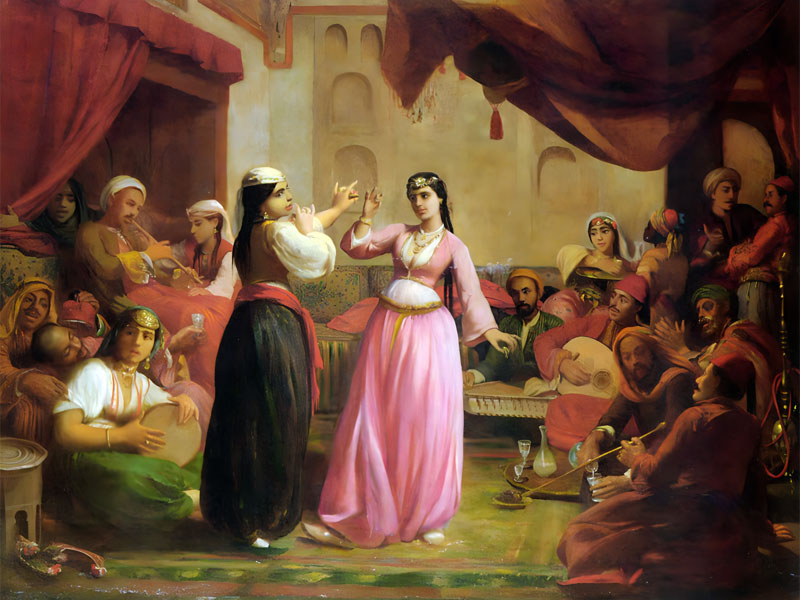Seductive dance: Where it originated and where it is performed
Issue 29

Awalim’ (seductive dancers) perform at ceremonies and weddings held by all social classes, whether at a five-star hotel or in a side street. There was great demand for this form of expressive dance from the second half of the nineteenth century until the mid-twentieth century.

In the past, the Awalim’s performance was eagerly anticipated at weddings and public and private concerts. Today they only perform at weddings in the most heavily populated areas.
In this type of performance, special bands celebrate wedding processions. The dancers wear candelabra on their heads. In the twentieth century, they began to use electric candles.
Sajat (finger cymbals) are used as percussion instruments, and their sound determines the performers’ movements. At weddings, the band and the dancers play tambourines and are sometimes joined by relatives of the bride or groom.
In Egyptian folkdance, each instrument has its own history, stories and origin that reflect customs, traditions and religious beliefs. Some instruments have evolved in terms of how they are played or their form, while others remained unchanged.
The dancers still use candelabra at weddings, which include music, singing and expressive dance. They begin their performance at the entrance to the hotel, and they accompany the bridal party and guests to the hall, where the bride and groom sit on the ‘kusha’ (stage). The performers use tambourines and/or Sajat.
In the past, Awalim performed for the guests after the bride and groom were seated on the kusha, but now oriental belly dancers perform to live or recorded music.
The wedding music and songs remain unchanged since the beginning of the 19th century, but there have been slight changes in the speed of the rhythm, and new, modern wedding songs have been added.
Mamluk governors were isolated from the Egyptian people, and the women who entertained them studied dancing, singing and the art of seduction in order to secure their positions in the governor’s palace. We still call these dancers Awalim, because the word in Arabic suggests that they are knowledgeable
Tameer yahya
Egypt




































































